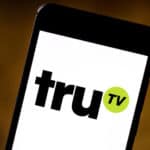That new car smell is expensive. The average new car depreciates 10% in value, one month after its purchase. After 2-3 more months, new cars are expected to depreciate 20-30% more. With these facts in mind, that sought-after new car scent may smell less appealing, and you find yourself wanting to purchase from a used car dealership instead.
In this short read, we will go over what you should expect to feel confident and knowledgeable as a used car buyer. We will classify the types of used car dealerships, review the importance of your own research, and go over what to look out for on your search.
Dealerships
You need to know the two major types of dealerships that sell used cars. The first is a new car dealership. A new car dealership, save its name, sells used cars that are most often certified pre-owned. Certified pre-owned means the car has passed a rigorous manufacturer-approved inspection, and it will likely carry the original manufacturer’s warranty.
An independent used car dealership is the second major type of used car vendor. This is what you might think of when imagining a typical used car dealership. The inventory isn’t specific to a certain manufacturer, giving a wider range of options. However, warranties and certification will be based on what this dealership offers, if anything at all.
Differences Between New Car Dealerships and Used Car Dealerships
Pricing and Financing
The critical dividing line for car buyers is pricing. Independent used dealerships are known for approving loans for those buyers will less than ‘Good’ credit (a credit score of 670 and below). On the other side of the coin, buyers will need at least ‘Good’ credit to purchase a used car from a new car dealership. Because independent used car dealerships have approved a buyer with less than good credit, the interest on the loan will be several percentage points higher than your average loan (6-20%). A higher interest rate on a loan means a higher percentage of the monthly payment will go to the person lending the buyer the money, instead of paying off the car. Unfortunately, this is the price someone with less than good credit has to pay when purchasing a car.
The situation is the opposite for new car dealerships. You are rewarded for having at least good credit. A good interest rate on a loan will hover around 3-5% for a buyer with at least good credit.

Selection
Independent used dealerships will have a wider selection than the new car dealerships. Because new car dealerships receive used cars as trade-ins, they have a sock of used vehicles on the lot, but it is typically limited. After all, a new car dealership’s goal is to sell new, not used cars. Thus, they limit their inventory of used cars.
The plus-side of the limited selection at a new car dealership is that the overwhelming majority of these vehicles will be classified as ‘certified pre-owned.’ It is not just a fancy name for used. Certified pre-owned means two things; the vehicle has passed a rigorous, multi-point inspection per the standards of the manufacturer and the manufacturer warranty now carries onto the next owner. This detail is all too important to overlook. Certified pre-owned vehicles have been made to look and drive as good as new by a team of certified mechanics. Certified pre-owned cars will likely be more expensive because of the quality refurbishing and guarantees.
Independent used dealerships are not able to sell certified pre-owned vehicles because they are independent of a manufacturer. However, they can just as well perform a multi-point inspection on a vehicle, potentially offer a manufacturer’s warranty, or include a third-party option. Lots of buyers are attracted to independent vendors because their selection will include older models and more affordable prices.
Repairs
A new car dealership will almost always have an on-site service staff. It is a little-known fact that dealerships make the majority of their profits not on the sales side of its business, but in the repair shop. When you purchase a used or certified pre-owned vehicle from a new car dealership, you are establishing a relationship with the dealership that may save you thousands in the future. There are also chances you are included in certain deals with the repair shop when you purchase a vehicle from a new car dealer.
Many independent used car dealerships have on-site mechanics as well. This is generally a sign that the dealership produces significant business in order to fund its own shop. However, some dealerships do not have on-site mechanics because they need to keep costs low in order to stay in the green. Independent vendors may be affiliated with other repair shops if you have a warranty that has approved the recent damage to your vehicle, which isn’t necessarily a bad thing.
Warranties Available
Warranties are insurance policies offered by either the manufacturer, the dealership itself, or a third party. Unlike car insurance, a warranty will pay for damage to your vehicle under a certain amount of miles driven, or time, whichever comes first. This is a subject in which you are expected to do your homework on. Warranties protect you in the case that your used car had more problems than you thought.
Any car that you will encounter in a dealership (new or used) has been mandated by the Federal Trade Commission to carry its own Buyers Guide. A Buyers Guide is often the piece of paper found in the window of the vehicle. On this, the warranty will be explained. Nothing the dealership claims about the warranty on the car may trump what is written on the Buyers Guide. This is a case in which doing your homework can save you time, money, and stress.

Lots of independent used car vendors offer warranties of their own, or one sold by a third party. If purchasing a warranty from a third party, cross-check the company’s name on the Better Business Bureau’s website (bbb.org). You can hurt your wallet if the company you bought it from is poorly rated.
New car dealerships also offer their own warranties. Once again, conduct research online at Kelley Blue Book (KBB.com), Edmunds.com, TrueCar.com, and more, to learn about warranties. You also have the option not to purchase a warranty if the vehicle does not come with one.
Types Independent Used-Car Dealerships
Online Used Car Dealerships
The used car buying experience has changed drastically over the last ten years. You now have the option to have a car delivered to your front door, take it for a test drive, and then purchase it, all starting from an app on your phone. This option is perfect for those that feel more comfortable buying their car on their own time and in their own space. No negotiating skills needed here.
Buy Here, Pay Here Used Car Dealership
A Buy Here, Pay Here used car dealership is a useful tool for those in need of a car, but have poor credit. These types of dealerships offer the loan from them. They skip the middleman, which is convenient for the buyer. However, the buyer might be paying an extremely high interest rate on their car loan (anywhere from 15-20% or more). For those in need of a vehicle and with a poor credit score, this option is helpful.
Superstore Used-Car Dealerships
If you have wandered through every possible dealership in your area and cannot find exactly what you’re looking for, search for your nearest superstore of used cars. A superstore used car dealership’s biggest asset is its selection. Superstores, in comparison to other car vendors, have the largest selection of used vehicles to choose from.

Research Makes Perfect
If the type of dealership isn’t a concern for you, or you already have a location in mind, then you should familiarize yourself with the specific car or type of vehicle that you know you want to buy. There are millions of people that get paid to share information on the internet about cars, so use it to your advantage. Excellent sources for car reviews of all years are Kelley Blue Book (KBB.com), Edmunds.com, and TrueCar.com. You will be able to find fair price ranges for the car you are looking at in your area as well. You can read customer reviews, see pictures of the model, and more. There are also YouTube channels that do the same. Your patience will reward you with fewer visits to the repair shop, better customer service, and a financing plan that is perfect for you and your future.
Keep in mind that because the car is used, anything under the sun could have happened to it, not just common issues discovered in your search. After the car is yours, you will be the one who has to live with any defects you find after purchase.
Negotiating
Negotiating is a crucial tactic when entering a used car dealership. The best advice I have ever been given on negotiating is to treat the salesperson with respect. You should be kind and explain your needs, but still remain firm on the features of the car that are unchangeable for you (perhaps these are price, model year, and original warranty). Remember, it is your money and you make the decision to spend it.
Knowing the key information when deciding where to buy a used car from is going to benefit you in multiple ways. It is important to understand what each option offers, how their selection works, what bonuses are involved, and more. It’s then up to you to find the car at the dealership you trust, negotiate to where you’re comfortable, and drive your new-to-you car home.



